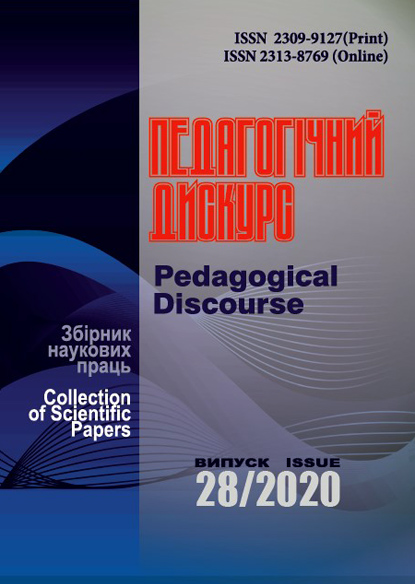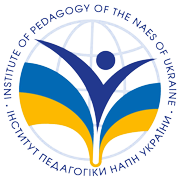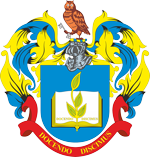Usage of Social Networking Sites by Students-Veterinarians who Study Operative Surgery
Abstract
The modern period of human development can be characterized as the time of intensive formation and rapid spread of Internet technologies. Thanks to the constant improvement of mobile technology, the Internet became easily accessible and united with the help of network services, most of the youth. It is social networks that have covered the whole world with their global web, providing the opportunity for groups of users to share interesting information with their mutual interests.
Active users of social networks are students. Many of them try to use every opportunity to improve their professional training. Including those that open up for them social networks.
This also applies to veterinarians studying surgical surgery. At the same time, today there is a lack of data on the use of social networks for educational purposes. The coverage of these issues was the purpose of the research.
In the process of research, an analysis of scientific sources on the use of social networks for learning purposes was conducted. For receive data on the use of network technologies, student-veterinarians that study surgical surgery used the following sociological methods, such as surveys, observations, questionnaires.
According to the obtained data, all surveyed students-veterinarians that study surgical surgery use social networks. At the same time, they prefer «Instagram» and «Facebook», twenty-five per cent use «Twitter» and one is registered in «Brainly». For educational purposes, these students most often use the video hosting YouTube and the network Facebook. The first is used as a platform for viewing a surgical video and «Facebook», mainly for reading text materials.
It is also noted that the overwhelming majority of students studying operative surgery like surgery work, although half of them are not sure of their ability to do that.
Implemented work opens the prospect for further research of the value of social networks in the preparation of veterinary surgeons.
Downloads
References
Ivashnova, S. V. (2012). Vykorystannia sotsialnykh servisiv ta sotsialnykh merezh v osviti [Use of Social Services and Social Networks in Education]. Naukovi zapysky Nizhynskoho Derzhavnoho Universytetu im. M. Hoholia. Psykholoho-pedahohichni nauky – Scientific Notes of Mykola Hohol Nizhyn State University. Psychological and Pedagogical sciences, 2, 15–17. Retrieved from https://www.researchgate.net/publication/332471306 [in Ukrainian].
Ivan’ko, A. F., & Ostanina, I. S. (2015). Twitter v obrazovanii [Twitter in Education]. Vestnik MGUP im. Fedorova – Bulletin of MGUP im. Fedorova, 6, 57–58. Retrieved from https://elibrary.ru/item.asp?id=25580487 [in Russian].
Klimenko, O. A. (2012). Social’ny’e seti kak sredstvo obucheniya i vzaimodejstviya uchastnikov obrazovatel’nogo processa [Social Networks as a Means of Learning and Interaction of Participants in the Educational Process]. Teoriya i praktika obrazovaniya v sovremennom mire [Theory and Practice of Education in the Modern World]: Proceedings of the International Conference. (p. 405–407). Saint-Petersburg: Renome. Retrieved from https://moluch.ru/conf/ped/archive/21/1799/ [in Russian].
Kurban, O. V. (2014). Sotsialni merezhi v roboti suchasnoho RR-fakhivtsia [Social Networks in the Work of a Modern PR-Specialist]. Visnyk KhDAK – Bulletin of the KhDAK, 44, 154–161. Retrieved from https://ic.ac.kharkov.ua/nauk_rob/nauk_vid/rio_old_2017/vh/v44/21.pdf [in Ukrainian].
Kuchakovska, H. A. (2015). Rol sotsialnykh merezh v aktyvizatsii protsesu navchannia informatyvnykh dystsyplin maibutnikh vchyteliv pochatkovoi shkoly [The Role of Social Networks in Intensifying the Process of Teaching Informative Disciplines to Future Primary School Teachers]. Informatsiini tekhnolohii i zasoby navchannia – Information Technologies and Learning Tools, 3 (47), 140. Retrieved from https://doi.org/10.33407/itlt.v47i3.1213 [in Ukrainian].
Maniuk, L. V. (2016). Vykorystannia elektronnykh sotsialnykh merezh u protsesi pidhotovky maibutnikh likariv do profesiinoi diialnosti ta fakhovoi komunikatsii [The Use of Electronic Social Networks in the Process of Training Future Doctors for Professional Activities and Professional Communication]. Informatsiini tekhnolohii i zasoby navchannia – Information Technologies and Learning Tools, 53 (3), 90. Retrieved from http://nbuv.gov.ua/UJRN/ITZN_2016_53_3_10 [in Ukrainian].
Mel’nikova, M. R., & Minkin, A. V. (2018). Uchebny’j sajt «Shkol’ny’e znaniya» kak іnstrument dlya samoobrazovaniya [Educational Site «School Knowledge» as a Tool for Self-Education]. Forum molodyx uchenix – Forum for young scientists, 11-2(27), 67–70. Retrieved from https://elibrary.ru/item.asp?id=37004201 [in Russian].
Palii, S. V. (2013). Sotsialni merezhi yak zasib komunikatsii elektronnoho navchannia [Social Networks as a Means of E-learning Communication]. Upravlinnia rozvytkom skladnykh system – Management of Complex Systems Development, 13, 152–156. Retrieved from https://doi.org/10.32347/2412-9933.2013.13.%p [in Ukrainian].
Pinchuk, O. P. (2015). Istoryko-analitychnyi ohliad rozvytku sotsialnykh merezhnykh tekhnolohii i perspektyv yikh vykorystannia u navchanni [Historical and Analytical Review of the Development of Social Network Technologies and Prospects for Their Use in Education]. Informatsiini tekhnolohii i zasoby navchannia – Information Technologies and Learning Tools, 4 (48), 14–34. Retrieved from http://journal.iitta.gov.ua/index.php/itlt/article/view/1267 [in Ukrainian].
Radchenko, S. (2018). Vykorystannia multymediinykh tekhnolohii u pidvyshchenni efektyvnosti lektsiinoho protsesu vykladannia navchalnoi dystsypliny [The Use of Multimedia Technologies in Improving the Efficiency of the Lecture Process of Teaching the Discipline]. Smart-osvita: resursy ta perspektyvy [Smart Education: Resources and Prospects]: Proceedings of the 3rd International Conference (p. 132–135). Kyiv: KNTEU. Retrieved from https://knute.edu.ua/file/NjY4NQ==/4ce2164e98881e82955393871be6013d.pdf [in Ukrainian].
Stepanov, O. D. (2017). Vykorystannia internet-tekhnolohii i sotsialnykh merezh studentamy mahistratury, shcho vyvchaiut khirurhichni khvoroby tvaryn [Use of Internet Technologies and Social Networks by Master’s Students Studying Surgical Diseases of Animals]. Profesiino-prykladni dydaktyky – Professional and Applied Didactics, 3, 239–247. Retrieved from http://pad.pdatu.edu.ua/article/view/120677/115631 [in Ukrainian].
Stepanov, O. D. (2018). Vykorystannia navchalnoho video pry pidhotovtsi veterynarnykh khirurhiv [The Use of Educational Video in the Training of Veterinary Surgeons]. Profesiino-prykladni dydaktyky – Professional and Applied Didactics, 5, 165–172. Retrieved from http://stlnau.in.ua/metodychna/samoosvita/item/2018/ppd180627.pdf#page=107 [in Ukrainian].
Tyshkova, O. (2014). Sotsialni merezhi yak vyklyk suchasnosti v osvitnomu seredovyshchi [Social Networks as a Challenge of Modernity in the Educational Environment]. Visnyk Instytutu rozvytku dytyny – Bulletin of the Institute of Child Development, 34, 63–72. Retrieved from http://nbuv.gov.ua/UJRN/Vird_2014_34_12 [in Ukrainian].
Ustinkina, K. G. (2016). Virtual’ny’e social’ny’e seti kak ob’’ekt izucheniya [Virtual Social Networks as an Object of Study]. Sociologiya nauki i texnologij – Sociology of Science and Technology, 1. Retrieved from http://cyberleninka.ru/article/n/virtualnye-sotsialnye-seti-kak-obekt-izucheniya [in Russian].
Blattner, G., & Lomicka, L. (2012). Facebook-ing and the Social Generation: a New Era of Language Learning Article. https://doi.org/10.4000/alsic.2413 [in English].
Cerdà, F. L., & Planas, N. C. (2011). Posibilidades de la plataforma Facebook para el aprendizaje colaborativo en línea. Revista de Universidad y Sociedad del Conocimiento, 8 (2), 31–45. Retrieved from https://doi.org/10.7238/rusc.v8i2.963 [in Spanish].
Cheung, C. M. K., Chiu, P., & Lee, M. K. O. (2011). Online Social Networks: Why do Students Use Facebook? Computers in Human Behavior, 27 (4), 1337–1343. Retrieved from https://doi.org/10.1016/j.chb.2010.07.028 [in English].
June, S., Yaacob, A., & Kheng, Y. K. (2014). Assessing the Use of YouTube Videos and Interactive Activities as a Critical Thinking Stimulator for Tertiary Students: An Action Research. International Education Studies, 7(8), 56–67. Retrieved from https://doi.org/10.5539/ies.v7n8p56 [in English].
Kárpáti, A. (2009). Web 2 Technologies for Net Native Language Learners: A «Social Call». ReCALL, 21, 139–156. Retrieved from https://doi.org/10.1017/S0958344009000160 [in English].
Prensky, M. (2006). Listen to the Natives. Educational leadership, 63 (4), 8–13. Retrieved from https://www.researchgate.net/publication/279868129 [in English].
Copyright (c) 2020 Pedagogical Discourse

This work is licensed under a Creative Commons Attribution-NonCommercial-ShareAlike 4.0 International License.

















